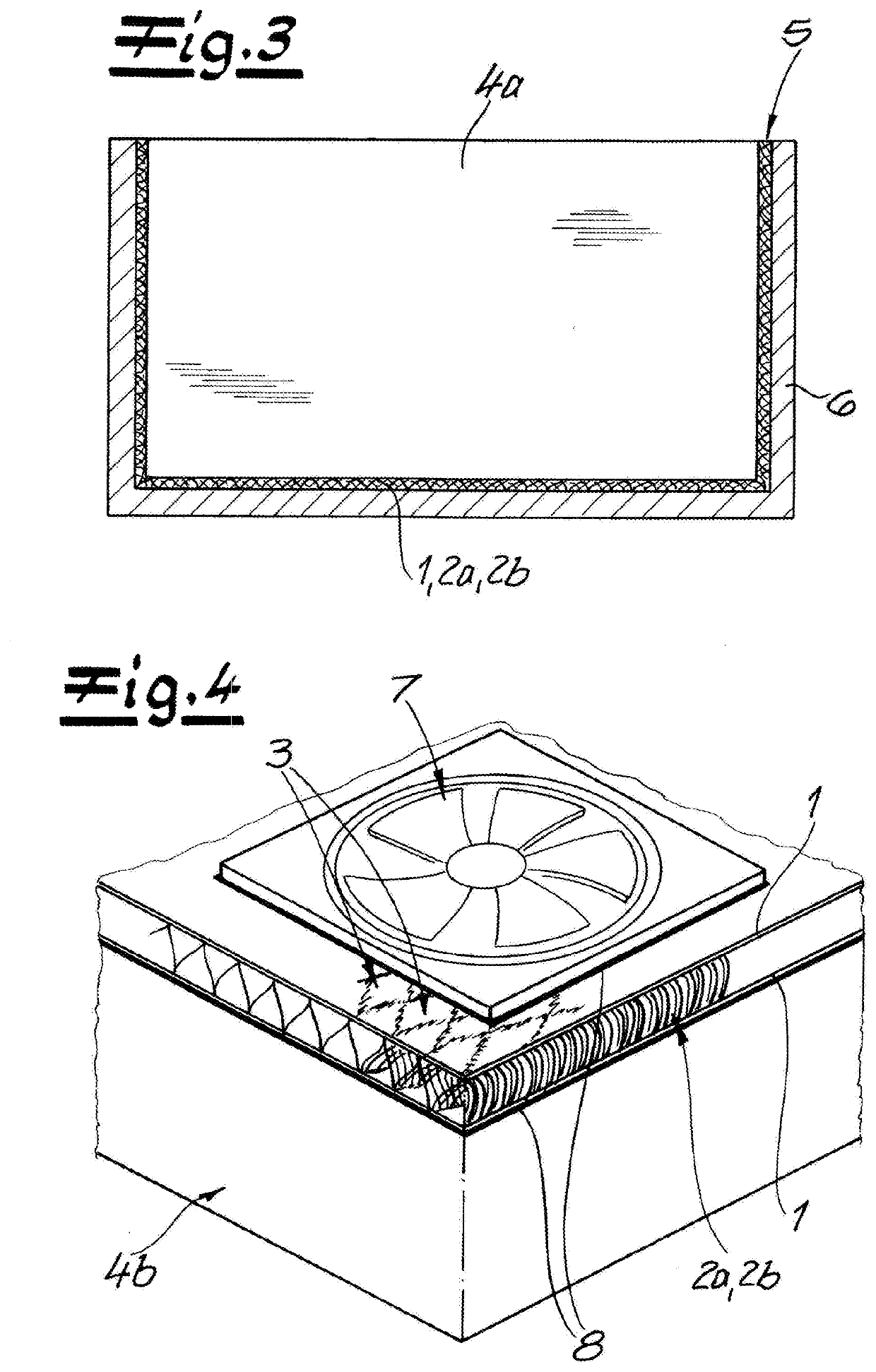Spacer fabric
a spacer fabric and fabric technology, applied in the field of spacer fabrics, can solve the problems of undesirable energy and heat loss in the lead and at the contact point, non-negligibility, and high cost of materials, and achieve the effect of good electrical conductivity of the spacer fabri
- Summary
- Abstract
- Description
- Claims
- Application Information
AI Technical Summary
Benefits of technology
Problems solved by technology
Method used
Image
Examples
Embodiment Construction
[0039]As seen in FIG. 1, a knitted spacer fabric has two knitted and generally planar or flat outer layers 1 and first and second spacer yarns 2a and 2b that extend transversely between and interconnect the knitted layers 1. Both knitted layers 1 and the first spacer yarns 2a are formed wholly of metal braid. This results in a three-dimensional, thermally and electrically highly conductive structure whose conductivity is ensured in the plane of the two knitted layers 1 and transversely by the first spacer yarns 2a in the direction of knit's thickness. The thermally and electrically conductive connection of the first spacer yarns 2a to the knitted layers 1 is achieved by using uncoated and uninsulated strands in the metal braid of the layers 1 and yarns 2a by having the yarns or strands of the metal braid angled as a result of stitching abut against one another.
[0040]It can be seen particularly in FIG. 2 that the second spacer yarns 2b are formed by polymeric monofilament yarn. By vi...
PUM
| Property | Measurement | Unit |
|---|---|---|
| diameter | aaaaa | aaaaa |
| diameter | aaaaa | aaaaa |
| diameter | aaaaa | aaaaa |
Abstract
Description
Claims
Application Information
 Login to View More
Login to View More - R&D
- Intellectual Property
- Life Sciences
- Materials
- Tech Scout
- Unparalleled Data Quality
- Higher Quality Content
- 60% Fewer Hallucinations
Browse by: Latest US Patents, China's latest patents, Technical Efficacy Thesaurus, Application Domain, Technology Topic, Popular Technical Reports.
© 2025 PatSnap. All rights reserved.Legal|Privacy policy|Modern Slavery Act Transparency Statement|Sitemap|About US| Contact US: help@patsnap.com


